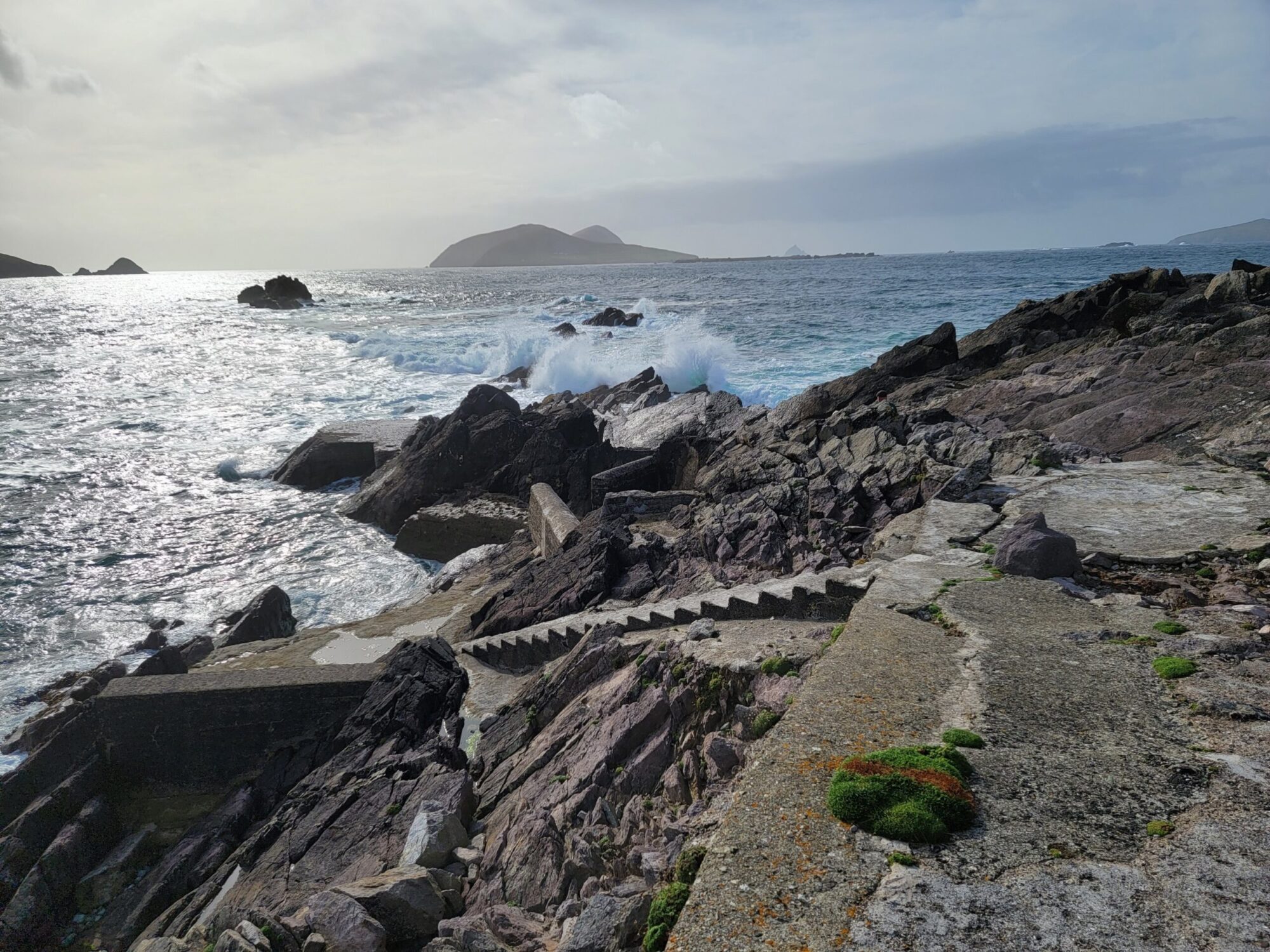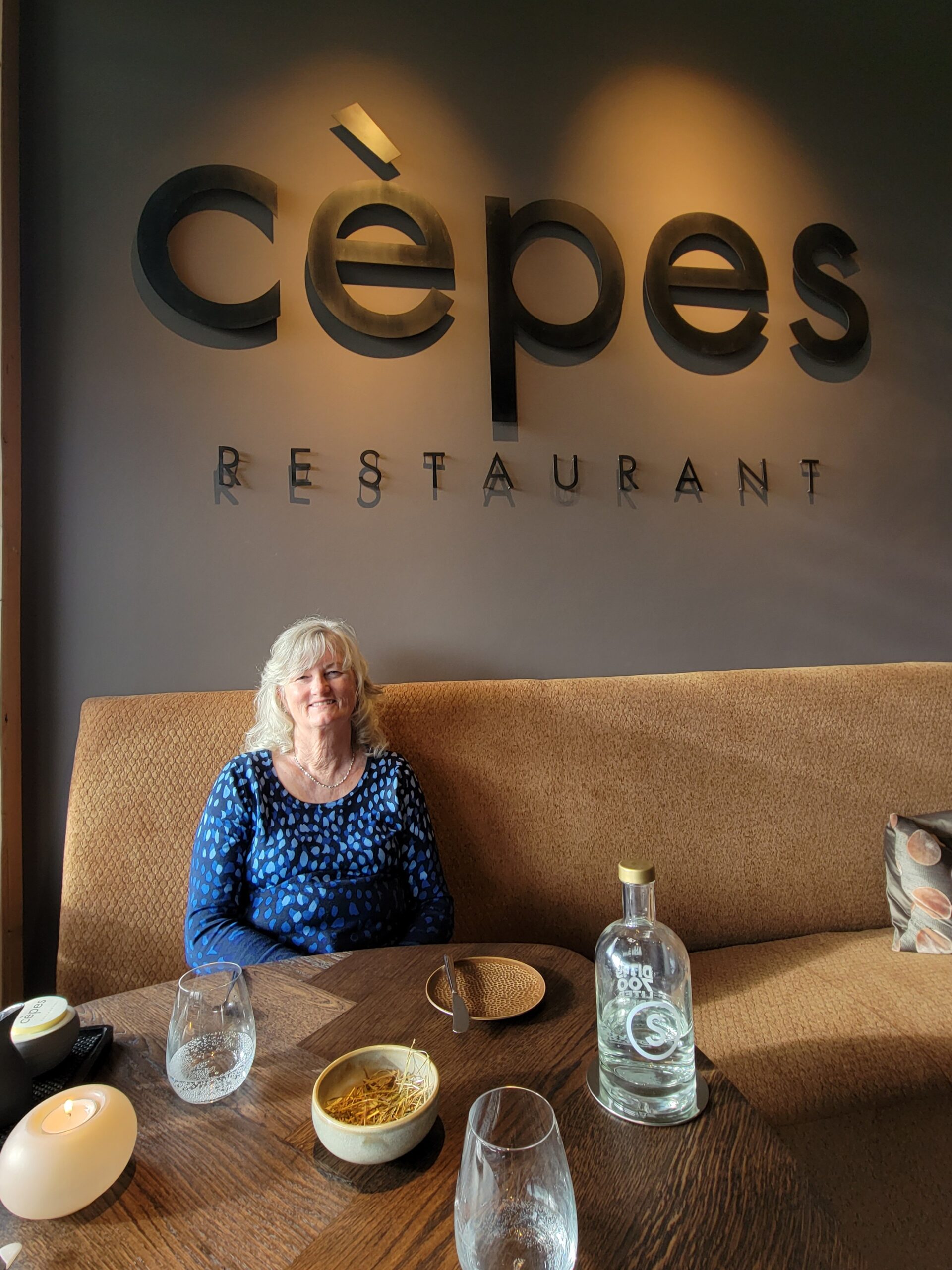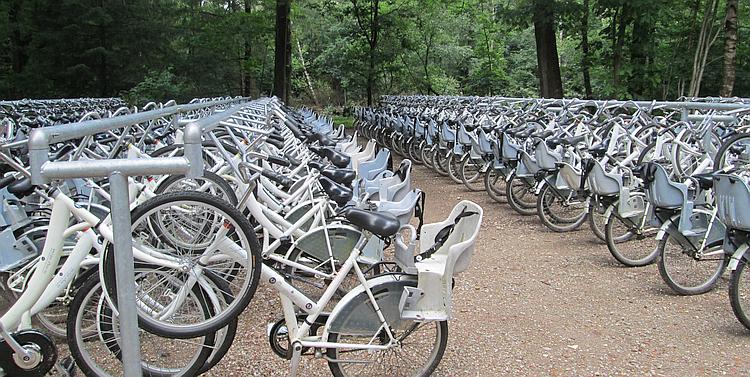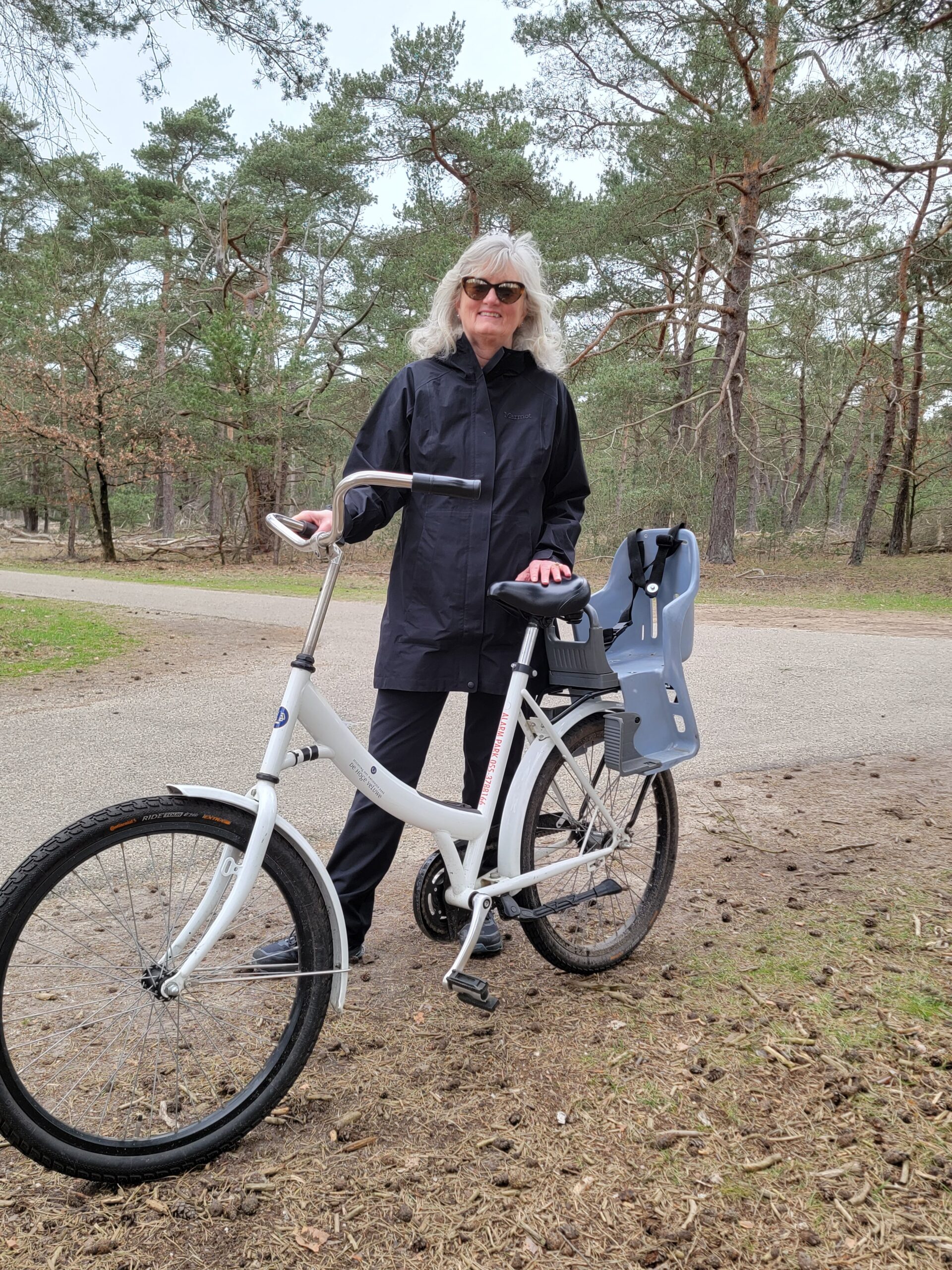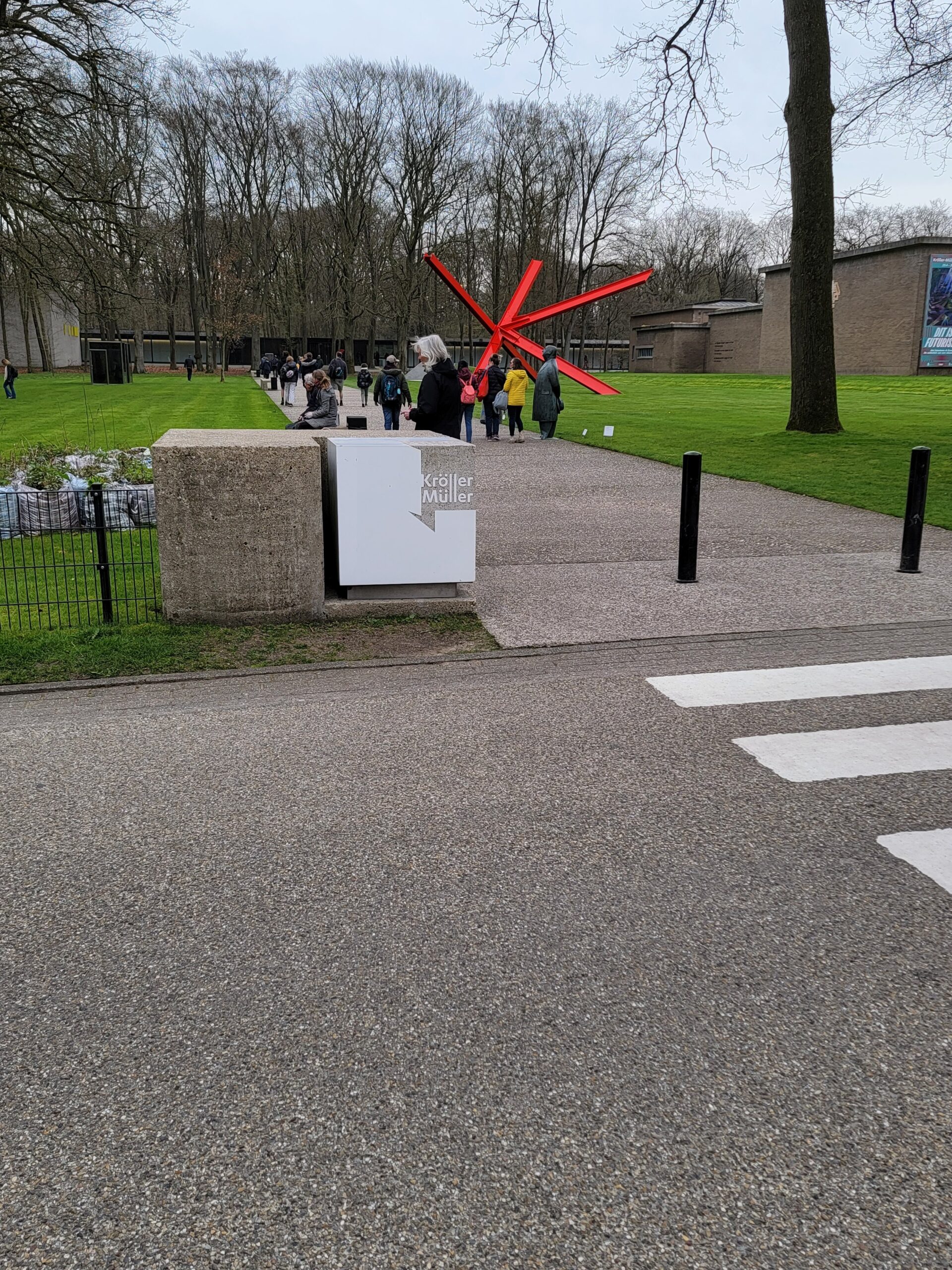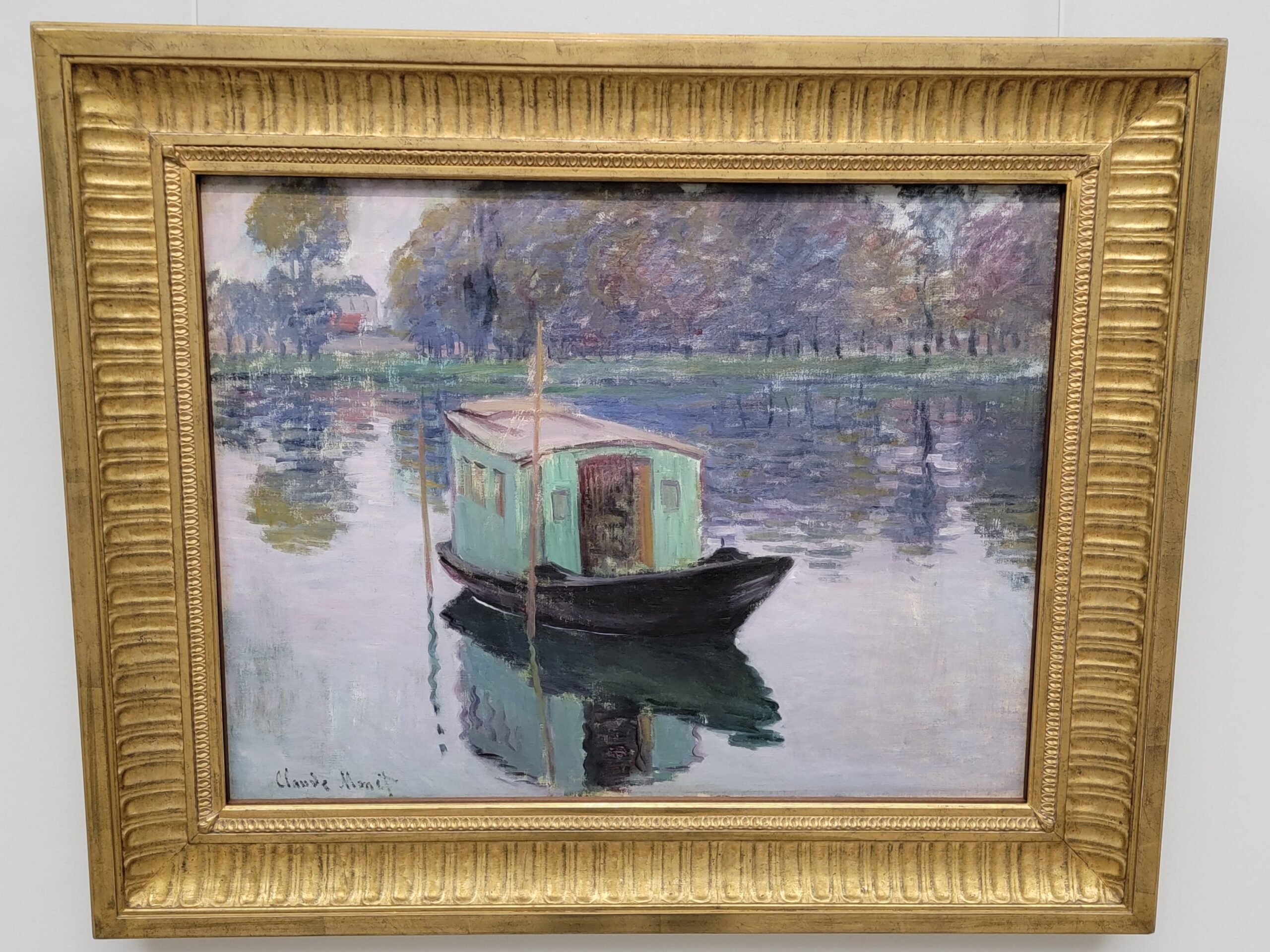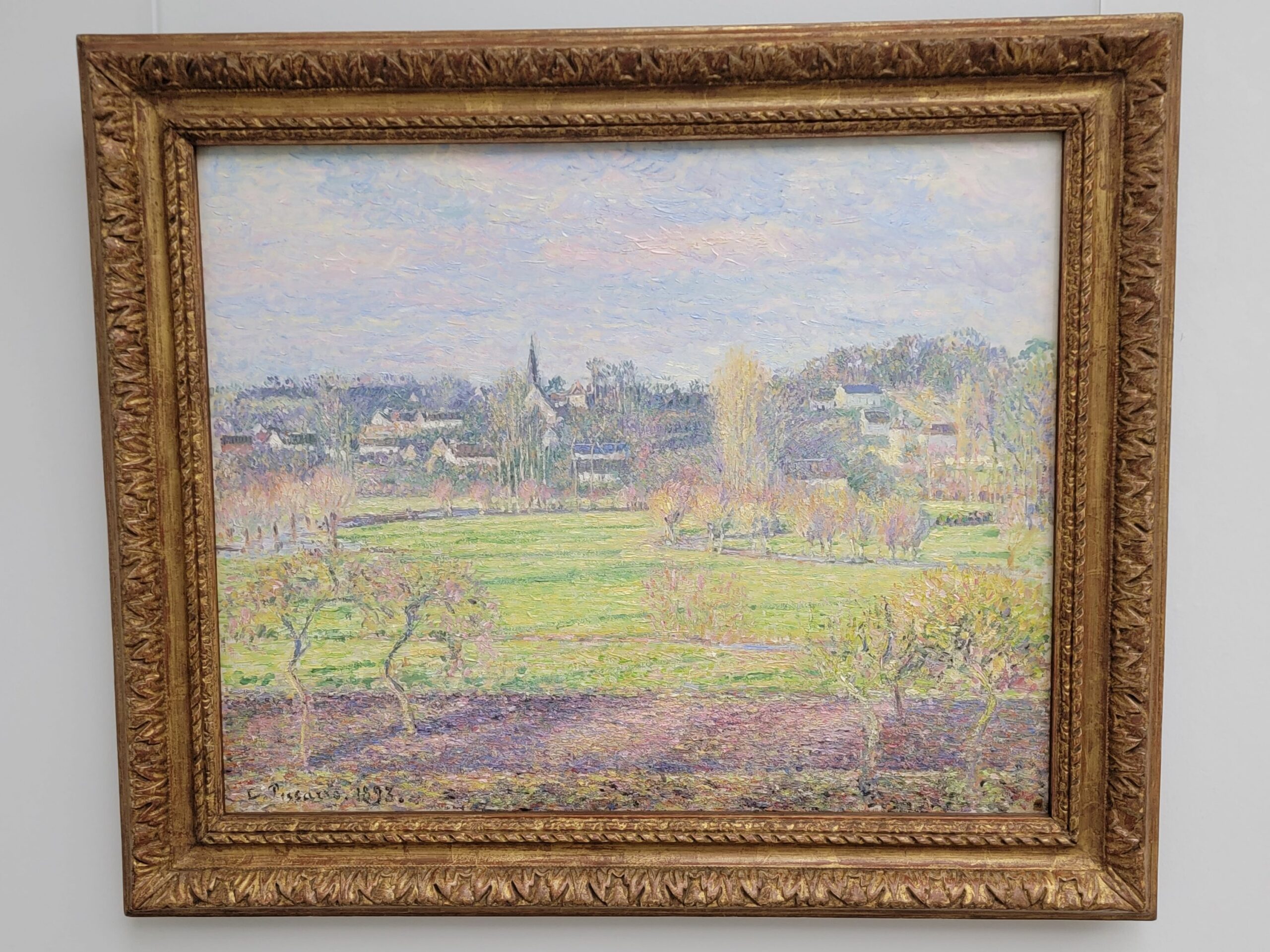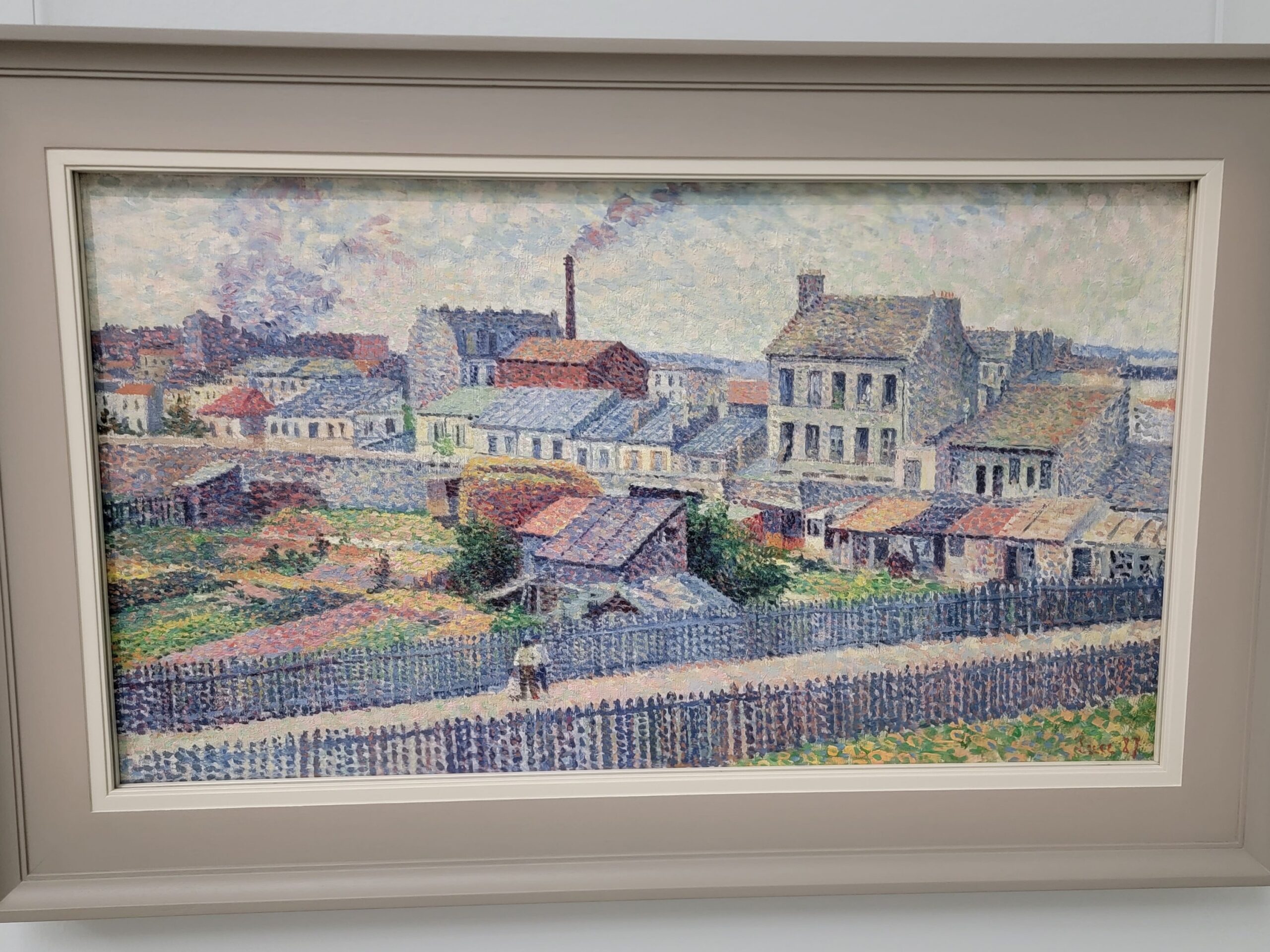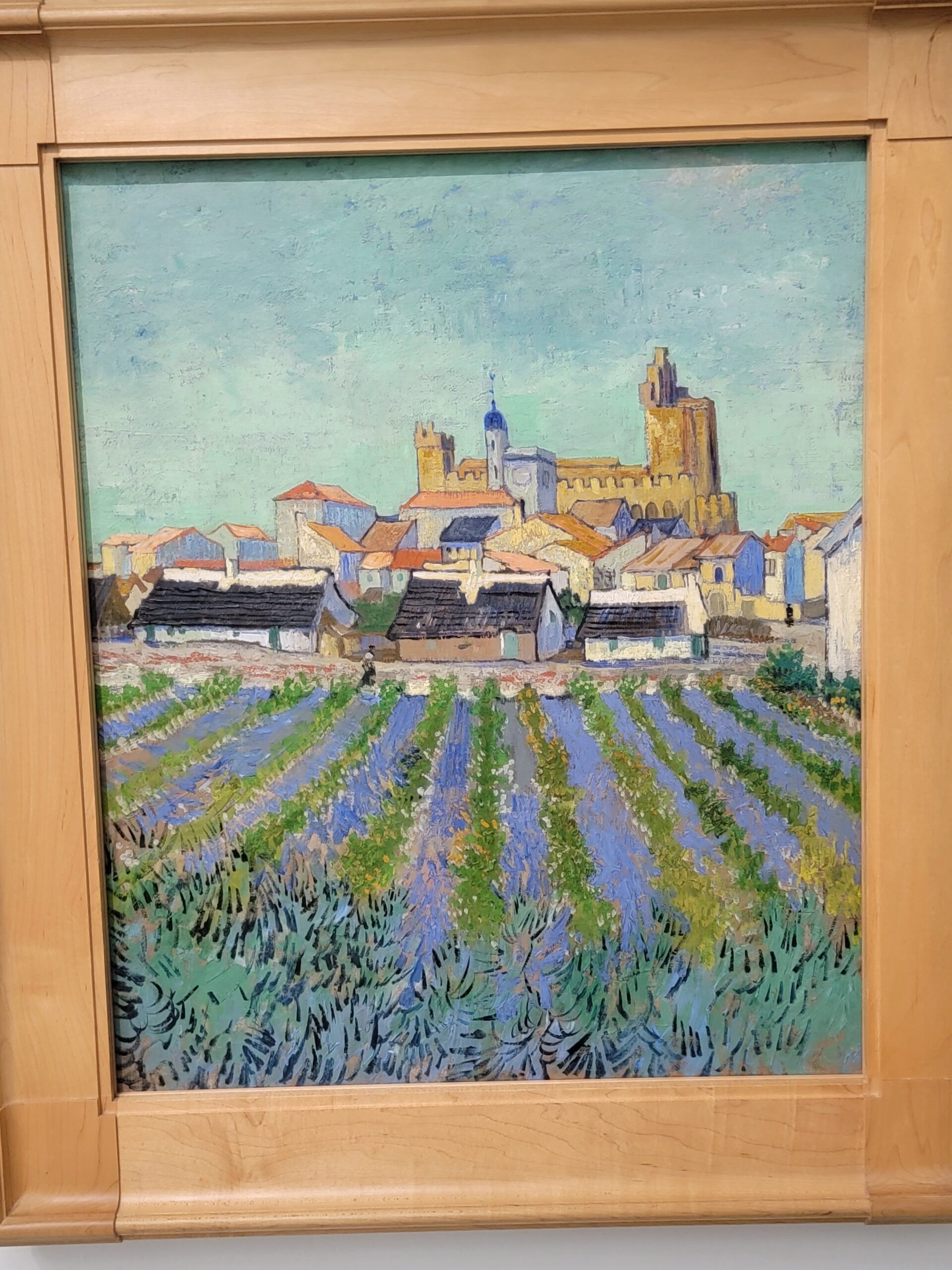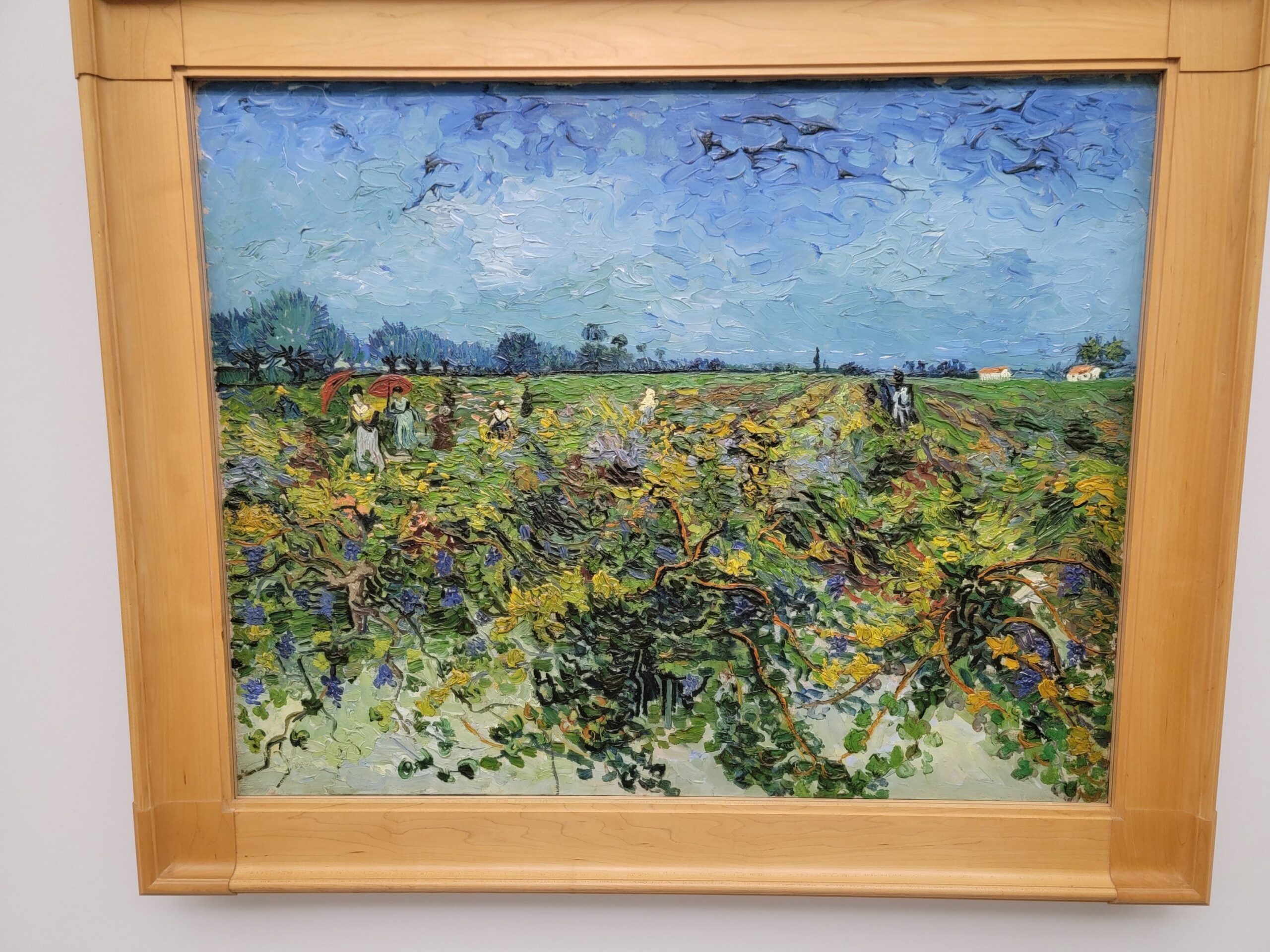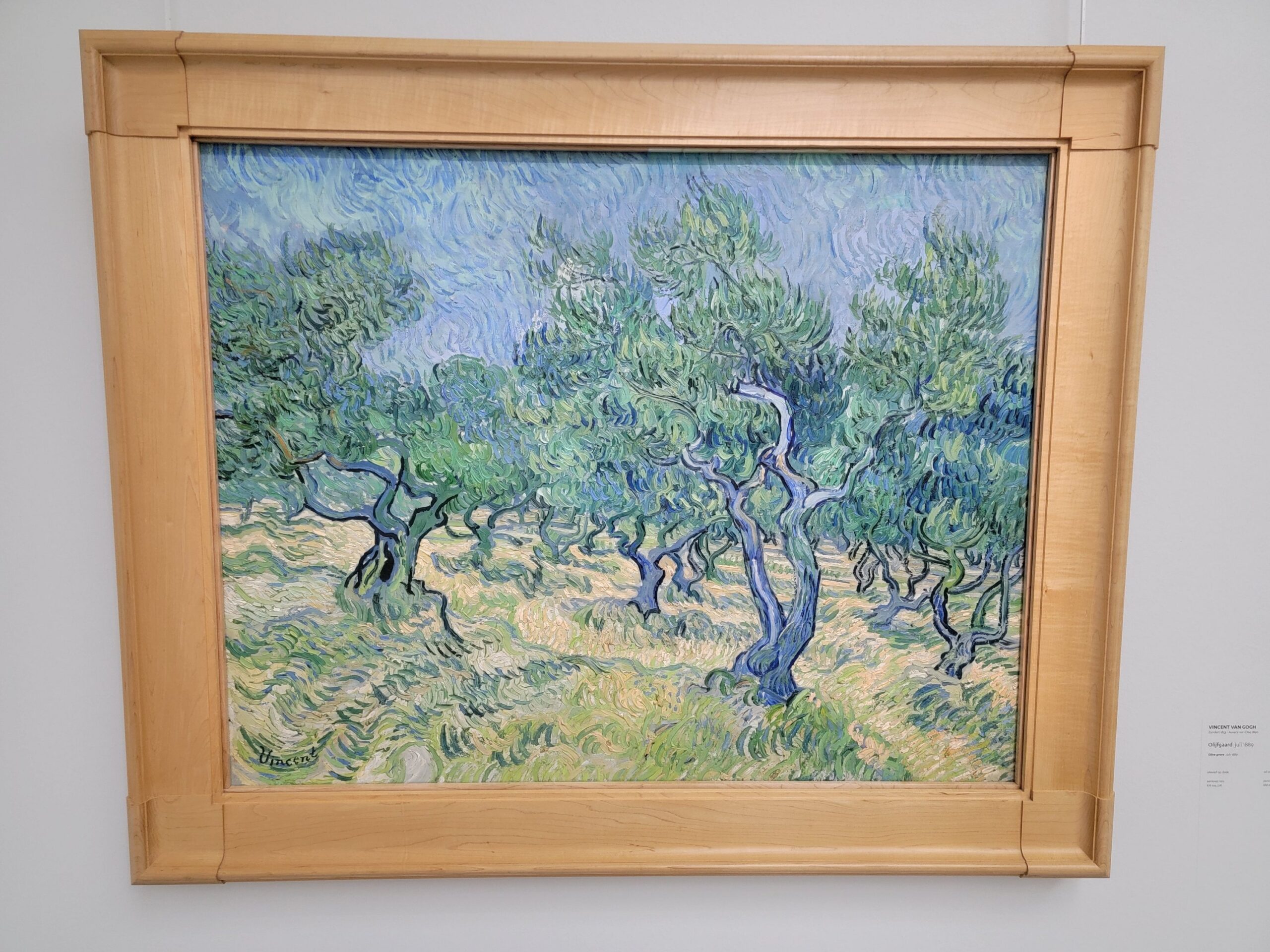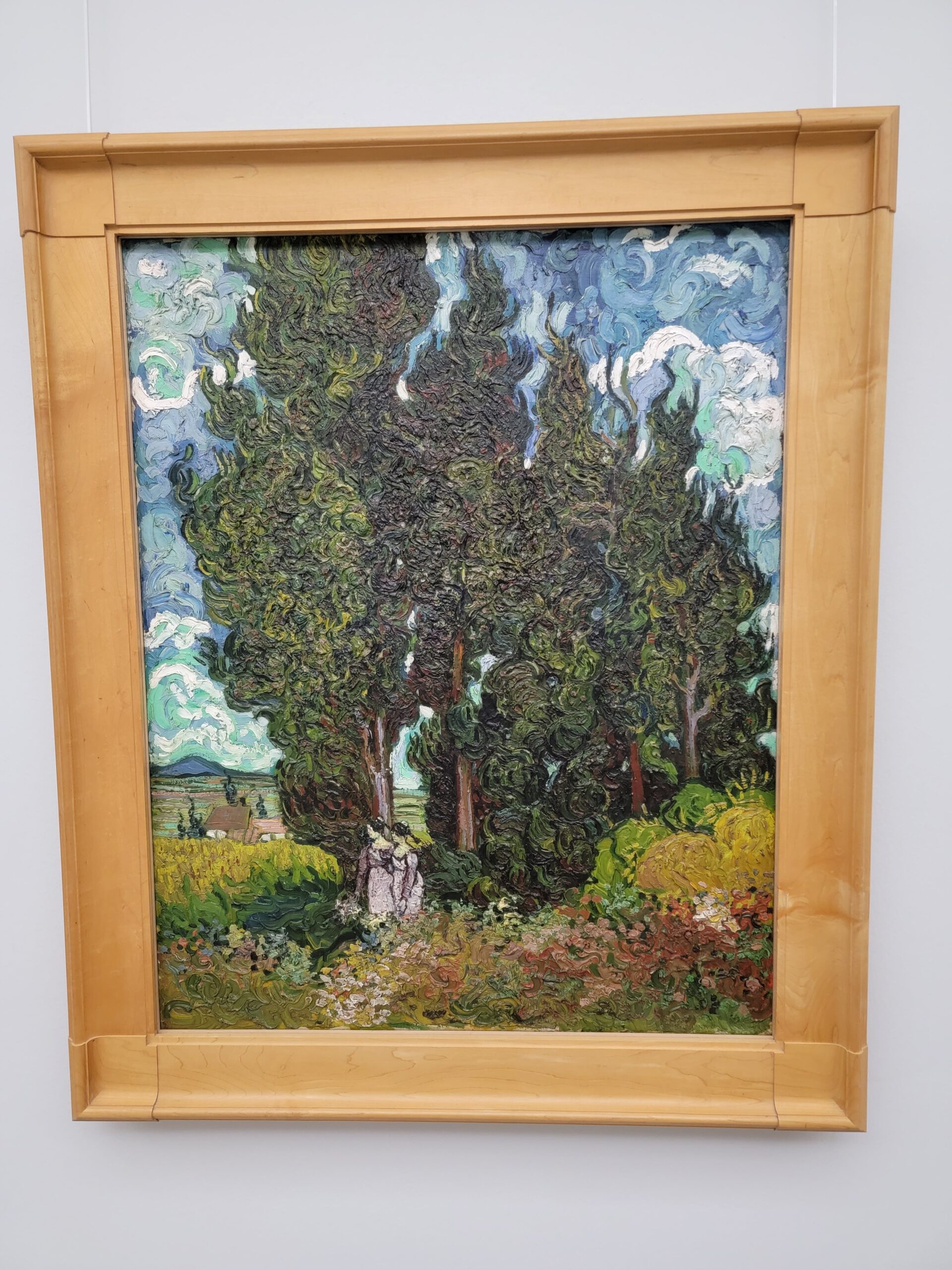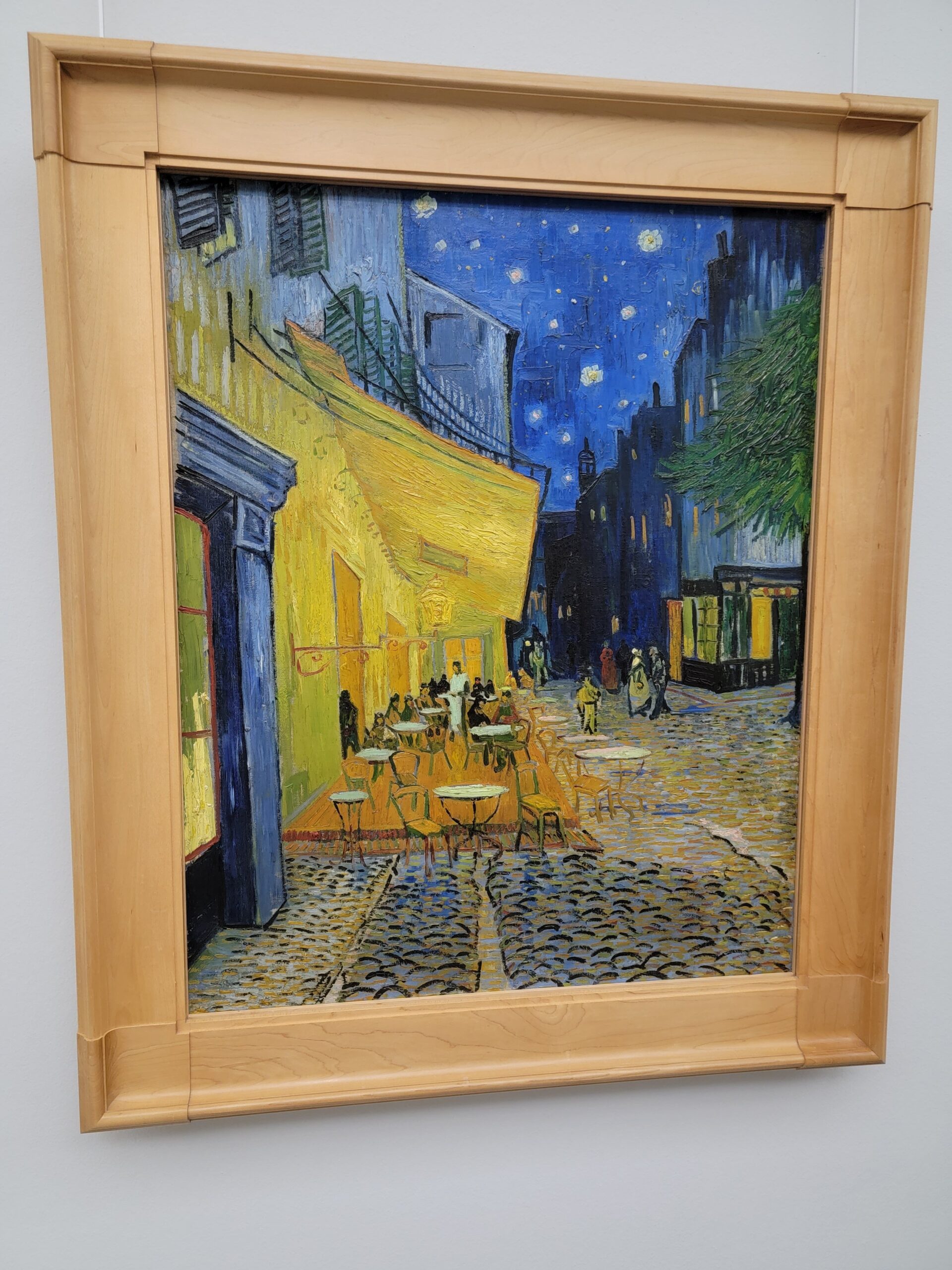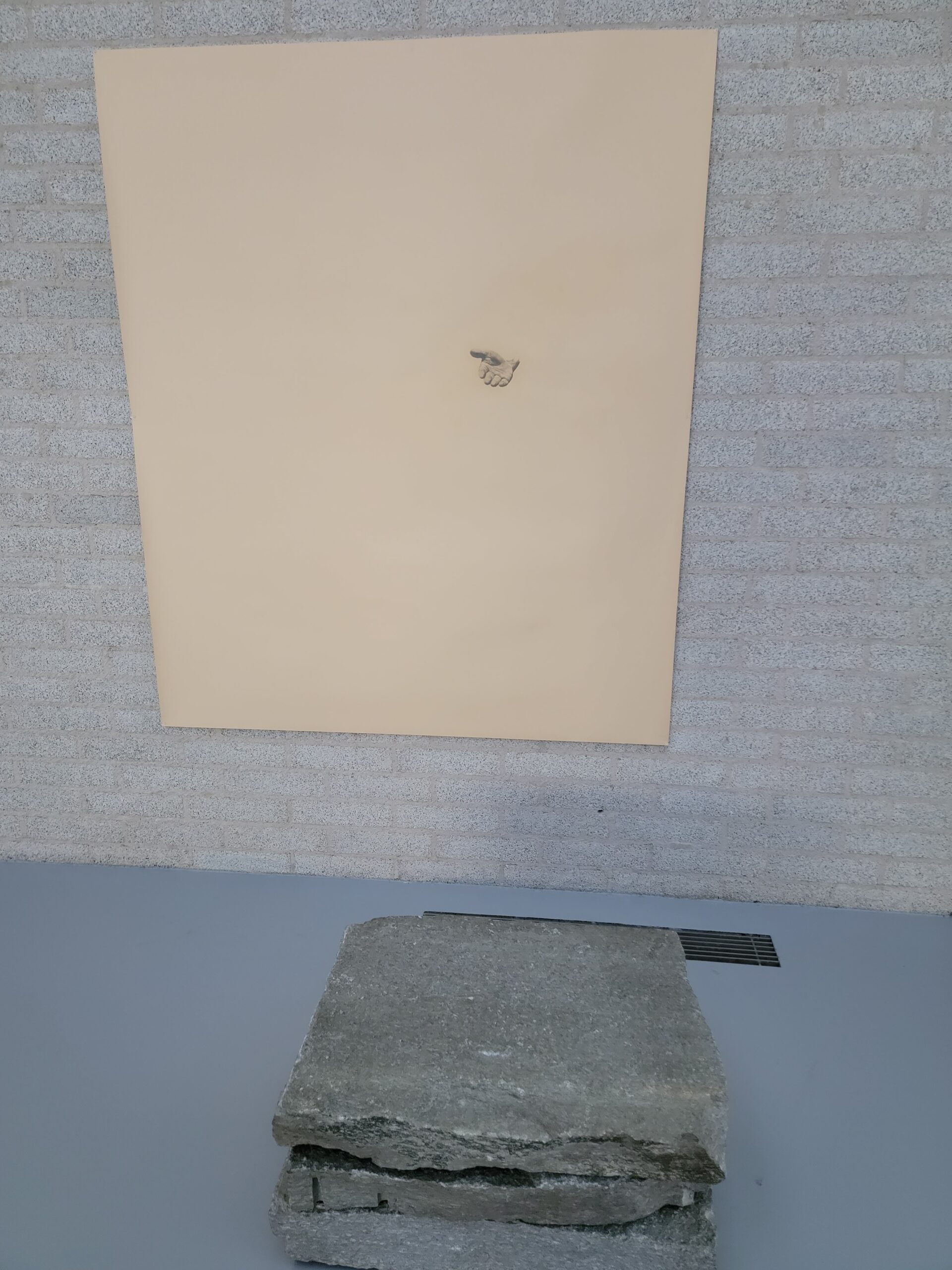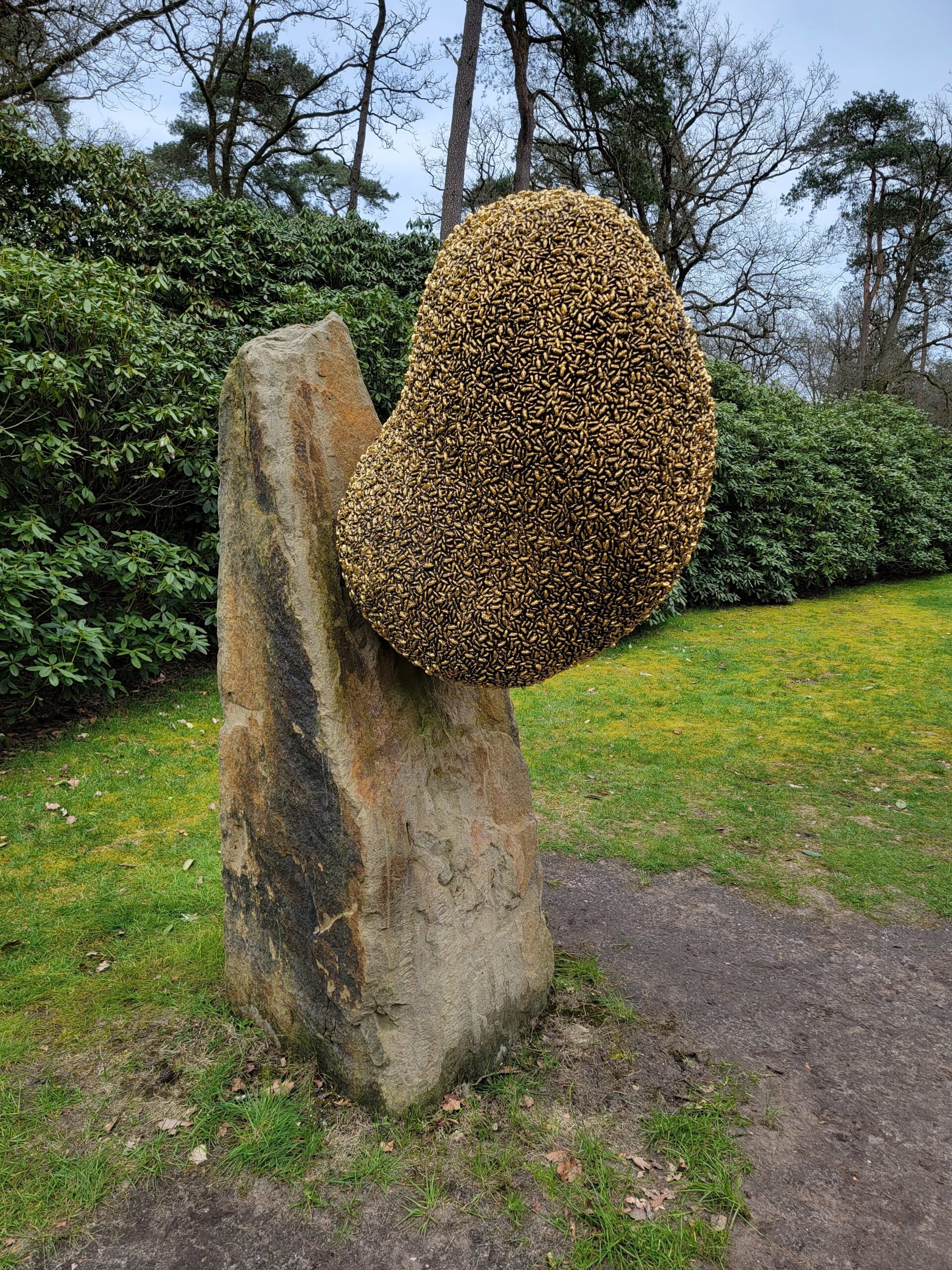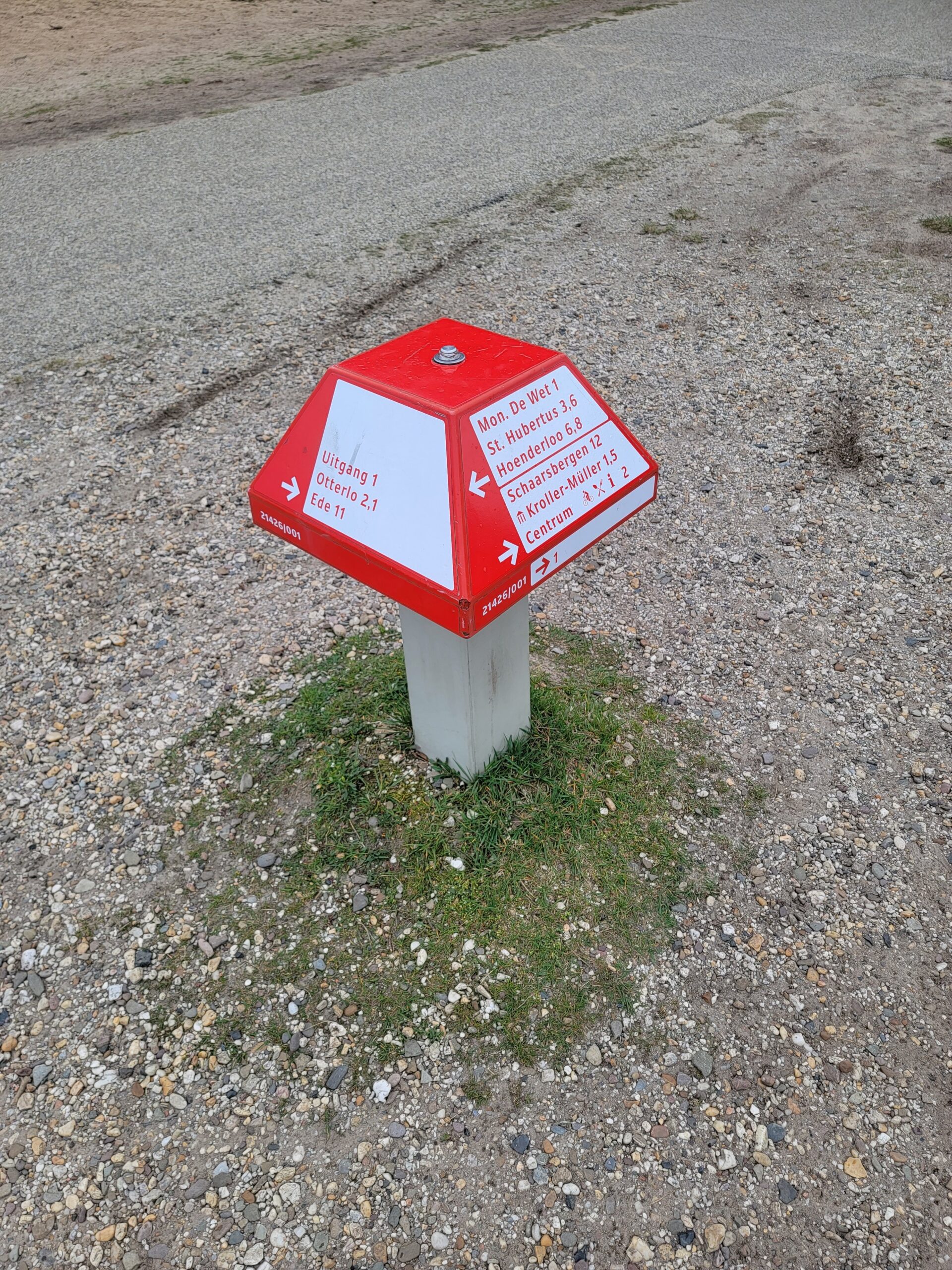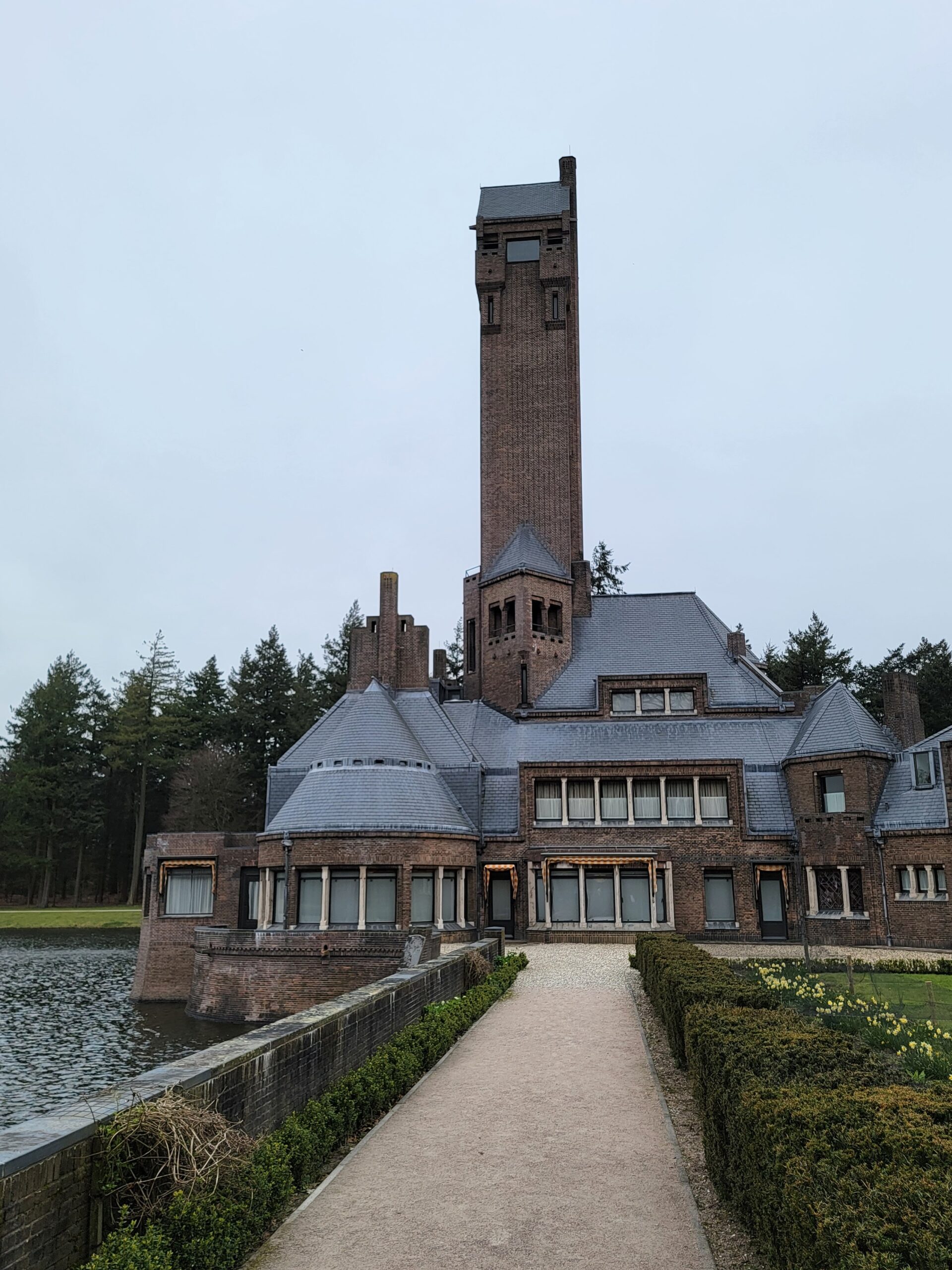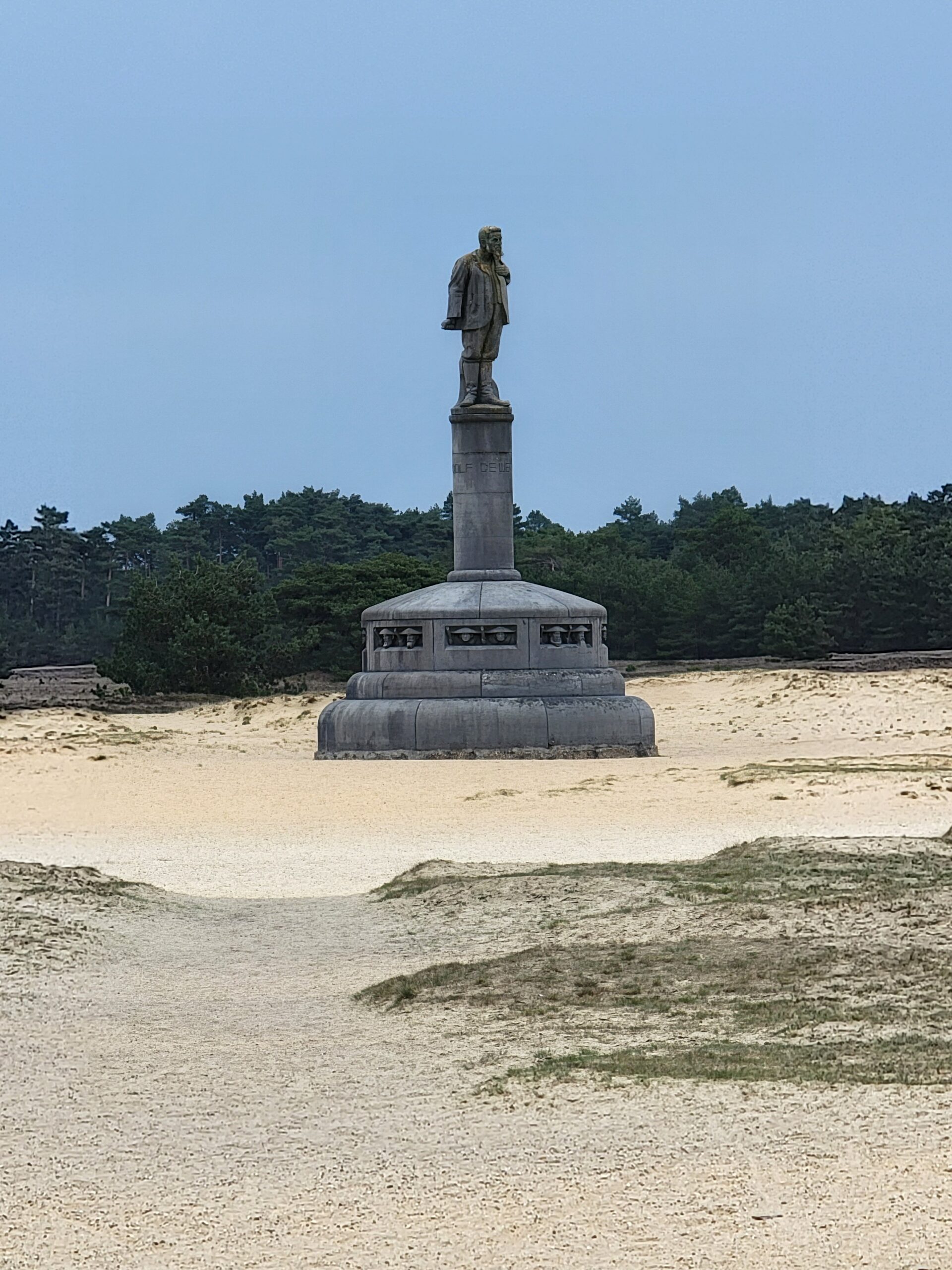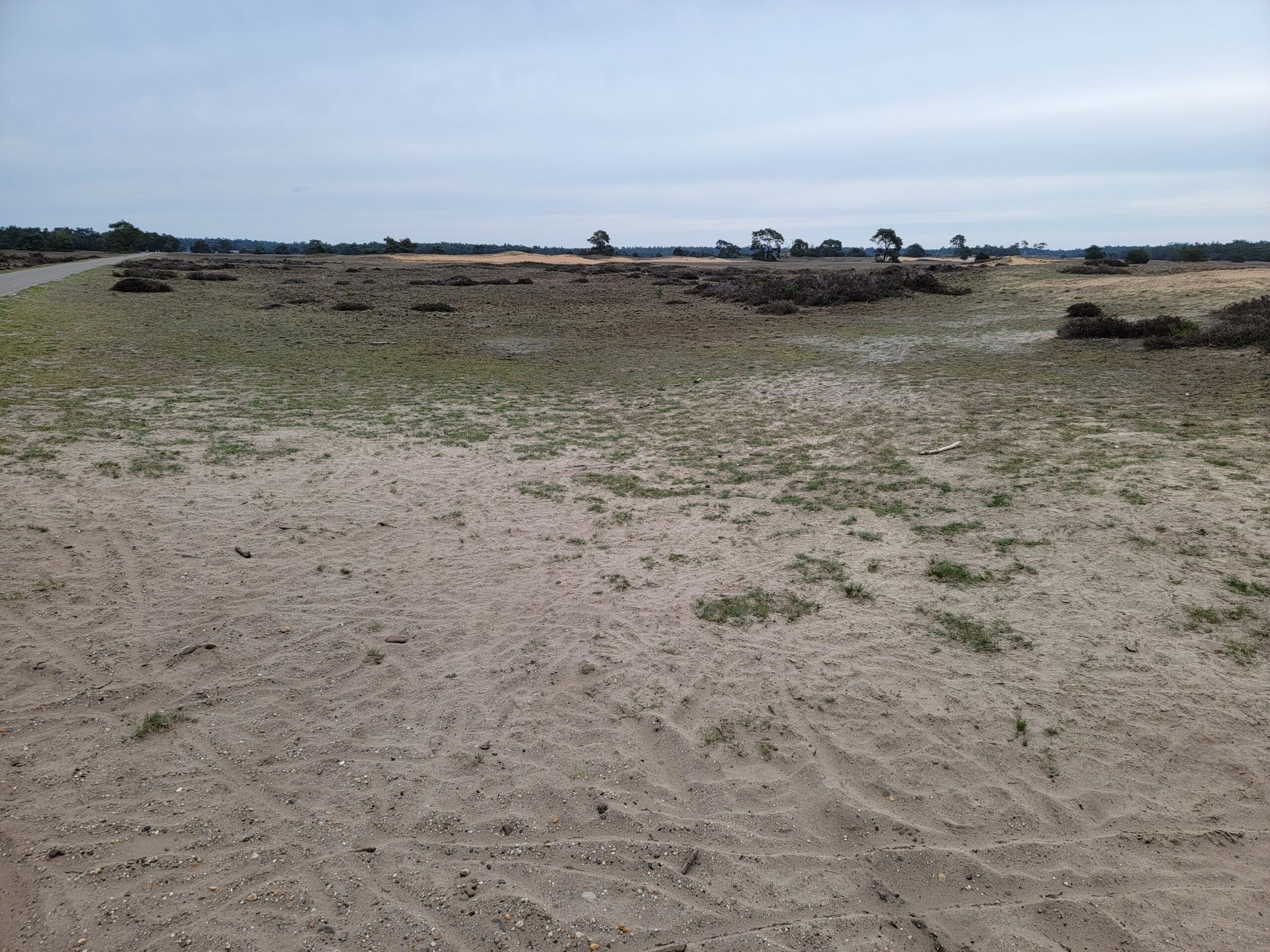The main reason we wanted to stay in Otterlo is it is directly adjacent to the De Hoge Veluwe National Park, as well as the fact it’s a small town with an excellent place to stay, Hotel de Sterrenberg.
They have a high end restaurant at the hotel, Cepes, that has a Michelin Plate, and you can tell they are working on a Star. The food was good, but we’ve had quite a bit better in The Netherlands, so they should likely stick with their Plate for now.
The park entrance is maybe 500 meters from the hotel, and once you are inside the park, you no longer need to walk, as they provide hundreds and hundreds of free bicycles for everybody to use.
Kim showing off her ride. Chris would later fall on his ass ala Biden while trying to swing his leg over the back of the bicycle like he used to do in his teens. The damned baby seat, which is on EVERY bike, blocked my leg, and DOWN GOES FRAZIER! Fortunately I got up before Kim could take an incriminating photo.
The bicycles aren’t top of the line. They have no gears and the brakes are applied by pedaling backwards, like when we were kids, but they worked just fine for getting around the park. No need to worry about your bike getting stolen either. Just park it and get a different one when you are ready. Great concept!
Our first stop was the Kroller-Muller Museum. One of the main reasons we wanted to visit this museum is they have the second largest collection of Van Gogh’s in the world. The largest is the Van Gogh Museum in Amsterdam, which we visited earlier on this trip.
We had tickets for 1230, but when we showed up early they ushered us inside, no problem. I must mention that all of the signs in Dutch were also displayed in English, which is not always common here. Yay!
Helene Kroller-Muller had a very wealthy father and an eye for great art. With the help of an art educator and critic, she spent wads and wads of her fathers money and collected 11,500 pieces of art from 1907 to 1939. These were mostly paintings, but included drawings and sculpture. She dreamed of building a museum so the community could enjoy her collection, and her dream came true in 1938, a year before her death, when this museum opened.
First up, this little sculpture by Picasso, dating from 1951-53, which shows they are still collecting art after Helene’s death. I didn’t realize he worked outside of paintings. He created this with an earthenware dish used to keep objects in place in the kiln. He added nails, screws bolts and the lid of a tin can, and held it all together with plaster.
This painting is by Claude Monet, dating from 1874. Monet is well known for his water lily paintings, as well as other paintings with water as a core element. To get these views he had a special studio-boat built so he could paint from the boat. He decided to actually paint his boat, and painted a person on the boat as well, believed to be himself.
We liked this painting by Camille Pissarro, called February Sunrise, from 1893. This was acquired in 1912.
Here is a pointillism painting called Outskirts of Montmartre, by Maximilien Luce, painted in 1887. Really love this one (Pointillism is a favorite style of ours), and I’ve never seen it before. This was acquired in 1926. It would make a great puzzle.
Helene felt Van Gogh was superior to all other artists, and made purchasing his art her highest priority. During an early auction of many Van Gogh paintings, Helene had her collector offer five times the starting price for each of the Van Gogh’s in the auction. I doubt she ever lost a bidding contest! Van Gogh is the central portion of her museum, and makes up the predominant part of the collection that is on display.
The next five paintings are my favorite Van Gogh’s from the Kroller-Muller collection. First is “View of Saintes-Maries-de-la-Mer”, a fishing village he visited while he was in Arles, France. This was painted in 1888, and acquired in 1912.
This is called “The Green Vineyard”, painted in 1888, and acquired in 1920.
This is called “Olive Grove”, painted in 1889 and acquired in 1912. We noticed there were a lot of purchases in 1912. Must have been a good year for daddy!
This is called “Cypresses With Two Figures”, painted in 1889-90, and acquired in 1914. Van Gogh wrote to his brother Theo of this painting “the cypresses still preoccupy me. It’s beautiful as regards lines and proportions, like an Egyptian obelisk. And the green has such a distinguished quality”. Ok, he was batshit crazy, so keep that in mind. It was interesting to see this up close, as the paint is so thick…and distinguished!
This last one is our favorite, bringing thoughts of “Starry Night” to mind. This is “Terrace of a Cafe at Night”, painted in 1888 and acquired in 1914. He painted this terrace by the light of gas lamps, and decided to try to paint a night scene without using any black paint. Astronomical research shows that he painted the constellations precisely as they appeared on 16 or 17 September, 1888. Very cool!!
There was a section of the museum set aside for a temporary modern “art” exhibit. I will spare you photos of the huge amount of crap on display, but I thought this one was so “poignant”. Read below for yourself.
“A drawn hand with an open gesture indicates the panorama, three stone slabs stacked on top of each other, as an invitation to consciously experience the surrounding space”.
WTF?? Weed is legal over here by the way. Below is more evidence. Don’t ask, because I have no answers.
We took a bike ride out to Helene’s summer home (St. Hubertus) about 4 miles from the museum. These directional signs mark the way for you so it’s easy to find your way around the park.
Her summer home is a small spot on a lake. Pretty modest…right?
This is a statue of General De Wet, as seen from the bike path in the park. De Wet was a General in the South African Boer Wars, and was a close personal friend of the Kruller-Mullers. The statue was deliberately placed here as the landscape bears a striking resemblance to that of South Africa.
The park has a mixture of forest and what looks like high desert, with lots of sand. I will say it’s not the most beautiful National Park I’ve ever seen, but with the Netherlands being almost entirely flat, perhaps they don’t have a lot to work with?? The Van Gogh’s more than made up for the lack of park scenery!
Up next, we take a hike near Nijmegen, and visit two WWII museums based on Operation Market Garden.
